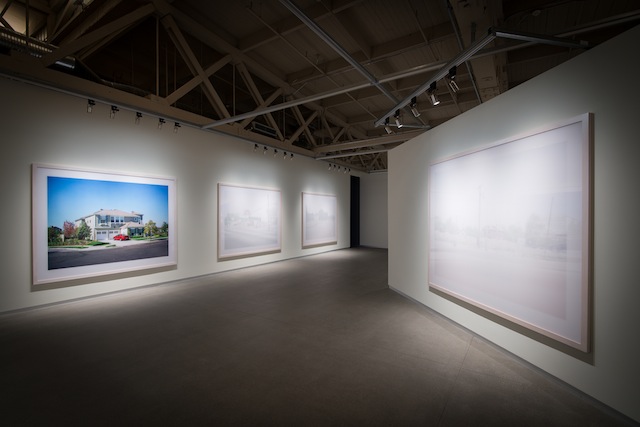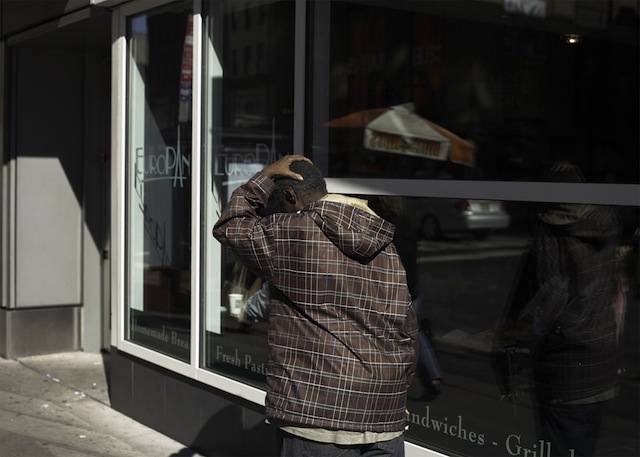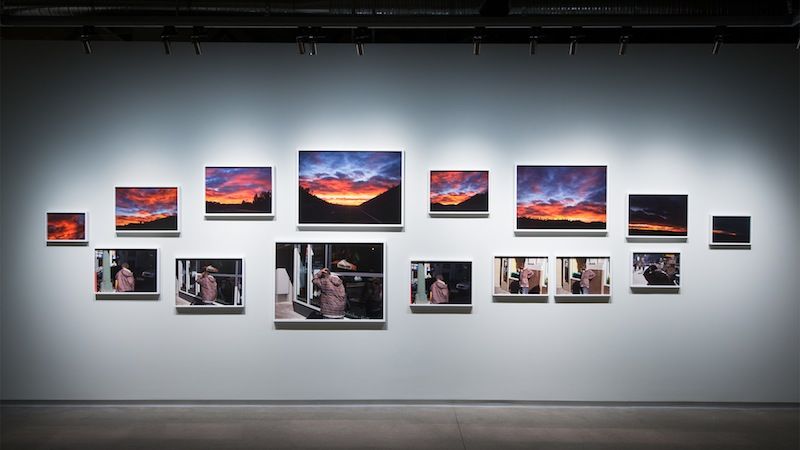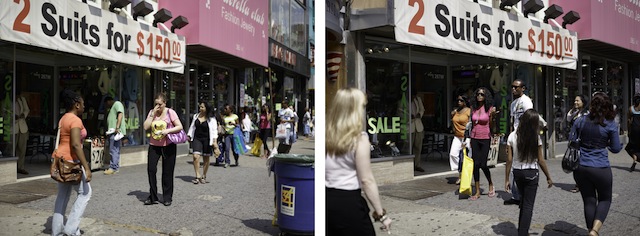At Pier 24 Photography, three series of works taken by British photograph Paul Graham across the United States since 1998 come together in The Whiteness of the Whale. Each series utilizes the mechanics of photography to address issues of perception and observation. In Graham’s work, the formal functions of photography stand in for light, awareness and time to link with depictions of racial inequity, despair, everyday struggle and the mundane.
The series American Night (1998-2002) grapples with light as a metaphor for what is hidden and what is highlighted in society. Crisp and colorful photographs document McMansions around the U.S. and the shiny SUVs parked in front of them. Interspersed throughout the gallery are nearly-whited-out photographs of distressed urban outskirts in places like Detroit, Memphis and Los Angeles. The light erases detail — though parking lots, golden arches and power lines can be made out, often with a single figure dwarfed by his or her surroundings and circumstances.

A number of sequences of commonplace moments comprise a shimmer of possibility (2004-06), depicting the passage of time created by the camera’s shutter. In California (2005-06) a homeless man rifles through his belongings in front of a Jack in the Box. The sequence is paired with a young girl traveling down a sidewalk before abruptly stopping, spreading out her own belongings, and eating a fast food meal. Both subjects are seen carrying their possessions in public, thinly connected to each other by the thread of fast food.
New York & North Dakota (2005) brings together two even more dissimilar scenes. An array of photos follows a woman through a brief, but seemingly trying, moment in her life. She is first seen walking with a slight hunch on a sidewalk before grasping her head as if to cope with some stressful situation. She stops in front of a building to smoke a cigarette, and in the final shot she is back on a busy sidewalk, clasping her head.

Above this sequence is a series documenting a beautiful North Dakota sunset. Peaceful orange, purple and blue clouds hang over the New York woman’s head, clashing with her anxiety.



